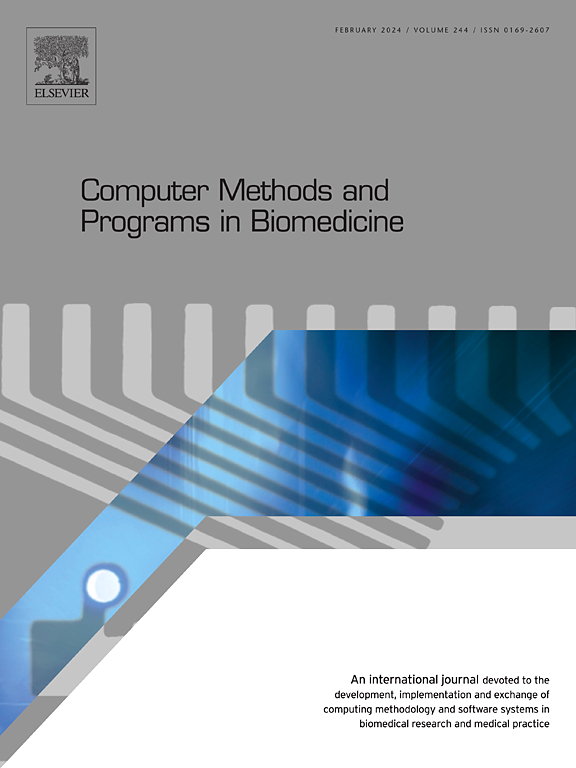The value of MRI radiomics in distinguishing different types of spinal infections
IF 4.9
2区 医学
Q1 COMPUTER SCIENCE, INTERDISCIPLINARY APPLICATIONS
引用次数: 0
Abstract
Background
In clinical practice, the three most prevalent forms of infectious spondylitis are tuberculous spondylitis (TS), brucellosis spondylitis (BS), and pyogenic spondylitis (PS). It is possible to successfully lessen neurological and spinal damage by detecting them early. In the medical field, radiomics has been applied extensively. It is crucial to find out if MRI imaging can be used to diagnose spinal infections early.
Purpose
To explore the diagnostic value of establishing models based on MRI radiomics for different spinal infections.
Methods
This retrospective study collected clinical and magnetic resonance imaging information on a total of 136 patients diagnosed with spondylitis in April 2019 and August 2023, who were classified into specific spinal infections (TS or BS) and non-specific spinal infections (PS) based on treatment. 3D Slicer software was used to outline the region of interest (ROI) and extracted ROI features. All patients were randomly divided into a training set and a test set (7:3), and after standardized, the t-test and LASSO were sequentially performed in the training set to extract the optimal radiomic features. These features were used to calculate the Radscore and construct the features classifier model and evaluated by test set. Univariate and multivariate logistic regression of Radscore and clinical features to identify predictors contributing to the diagnosis were used to plot nomograms, the area under the receiver operating characteristic curve (AUC), calibration curves, and decision curve analysis (DCA) to assess the nomogram. The same approach described above was used to diagnose both subgroups of BS and TS in SSI.
Results
321 radiological features were extracted from the three different sequences. The remaining 7 optimal radiomics features were used to calculate the Radscore and establish three feature classifier models, with RF having the best performance (AUC=1 and 0.86). And after univariate and multivariate logistic regression, the final nomogram constructed by Radscore and had good discriminatory performance in the training set and the test set (AUC =0.924 and 0.868), and the calibration curve and DCA showed good clinical efficacy. In the subgroup, the AUC of the training and test sets was 0.929and0.863.
Conclusion
The diagnostic model based on MR radiomics can gradually differentiate tuberculous spondylitis, brucellosis spondylitis, and pyogenic spondylitis.
求助全文
约1分钟内获得全文
求助全文
来源期刊

Computer methods and programs in biomedicine
工程技术-工程:生物医学
CiteScore
12.30
自引率
6.60%
发文量
601
审稿时长
135 days
期刊介绍:
To encourage the development of formal computing methods, and their application in biomedical research and medical practice, by illustration of fundamental principles in biomedical informatics research; to stimulate basic research into application software design; to report the state of research of biomedical information processing projects; to report new computer methodologies applied in biomedical areas; the eventual distribution of demonstrable software to avoid duplication of effort; to provide a forum for discussion and improvement of existing software; to optimize contact between national organizations and regional user groups by promoting an international exchange of information on formal methods, standards and software in biomedicine.
Computer Methods and Programs in Biomedicine covers computing methodology and software systems derived from computing science for implementation in all aspects of biomedical research and medical practice. It is designed to serve: biochemists; biologists; geneticists; immunologists; neuroscientists; pharmacologists; toxicologists; clinicians; epidemiologists; psychiatrists; psychologists; cardiologists; chemists; (radio)physicists; computer scientists; programmers and systems analysts; biomedical, clinical, electrical and other engineers; teachers of medical informatics and users of educational software.
 求助内容:
求助内容: 应助结果提醒方式:
应助结果提醒方式:


